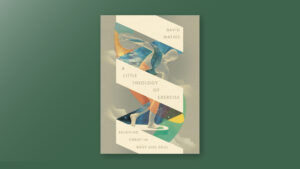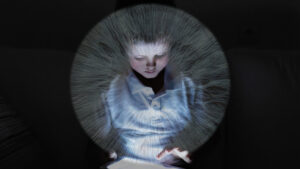What is the difference between common erotica and the Song of Solomon? Both describe human sexuality in vivid and breathless detail. Both provide detailed depictions of the human form, including at least allusions to the genitalia. Both paint striking portraits of sexuality and evoke strong passions. So what’s the difference?
Is it merely that the Canticles are one particular work of erotica taken up by the Holy Spirit and added to the Bible? If this is the case, we will be forced to conclude that either the Holy Spirit has lifted one proverbial pig out of the pig sty and dressed her up with lipstick and a party dress (or negligee, as the case may be) and hoped we wouldn’t notice the stink. Or perhaps erotica qua genre is not inherently wicked. Neither of these options, I think, is true. There must be some fundamental difference between what we witness in the Song of Solomon and what we encounter in worldly erotica.
There is one primary answer that exhibits itself in several ways. The single major difference between the Song of Solomon and erotica is the difference between means and ends. In his Song, Solomon’s primary goal is to describe love and beauty. To do so, he employs the most fundamental consummation of those virtues, human sexuality. Love and beauty are the ends, sexuality is the means. Erotica reverses that order. The main goal of erotica is to describe human sexuality, and occasionally it does this by employing descriptions of physical beauty and/or love. In erotica, sexuality is the end, love and beauty are merely means—disposable ones.
Beauty in Song of Solomon and Beauty in Erotica
Notice the difference between the way beauty is treated in the Song of Solomon and the way it is used in erotica. For Solomon, physical beauty should be celebrated with all the enthusiasm of youthful vigor. It is to be described in nearly tangible detail:
Your lips are like a scarlet thread; your mouth is lovely.
Your temples are like a slice of pomegranate behind your veil. (SOS 4:3)
And,
His cheeks are like a bed of balsam, banks of sweet-scented herbs;
His lips are lilies dripping with liquid myrrh. (SOS 5:13)
It gets more explicit, of course: there are descriptions of her breasts (4:5; 7:3, 7-8; 8:10), her hips (7:1), her naked belly (7:2), the allure of her “garden” (4:12-5:1), and the blossoming of her “orchard” (6:11). At least some would interpret the metaphor of 5:14, “his abdomen is carved ivory,” as thinly veiled phallic imagery. But when these unashamedly erotic descriptions are taken along with the rest of the imagery presented in the Song, the overall effect is not inordinate fixation on any one or two body parts. We delight in the human body as a whole, both male and female. To put it another way, Solomon is enraptured with beauty, not sexuality.
In erotica or pornography, there is no place for real beauty. There is an aping of certain beautiful aspects of the human form, to be sure, but even those are emphasized clumsily and with adolescent hurry in an effort to highlight what is most important: the sex.
Love in Song of Solomon and Love in Erotica
Consider the place of love in Solomon versus erotica. The depictions of physical beauty in the Canticles always leads to an encomium to love itself:
You have made my heart beat faster, my sister, my bride;
you have made my heart beat faster with a single glance of your eyes . . .
How beautiful is your love, my sister, my bride!
How much better is your love than wine. . . . (SOS 4:9-10)
And in one of the most evocative descriptions, Solomon asserts that tranquility itself can be found in the embrace of the beloved:
I was a wall, and my breasts were like towers;
Then I became in his eyes as one who finds peace. (SOS 8:10)
Kurt Vonnegut seems to have grasped the difference between love of beauty and mere lust when he penned “Miss Temptation,” which includes what must rank as one of the best descriptions of the feminine form of all time. His description might have been lifted right out of Solomon: “Susanna’s feathery hair and saucer eyes were as black as midnight. Her skin was the color of cream. Her hips were like a lyre, and her bosom made men dream of peace and plenty forever and ever.”
What piece of erotica can hold a candle to that writing?
Erotica is not interested in love. It will, at times, spread a thin veneer of love over certain stories, but love is never the main point. It is only ever back story. Erotica is written to titillate, the Canticles to celebrate. The one is written to provoke lust, the other to evoke beauty. It is the monumental difference between pornography and nude art, between Ron Jeremy and Michelangelo’s David.
The Song of Solomon is a monument to love and beauty and to the proper connection between them. The experience of human sexuality is the pedestal upon which the monument securely and audaciously rests. Solomon teaches us that the most ravishing beauty is a consequence of the most desperate love, that the beloved is so beautiful precisely because she is so loved.


































